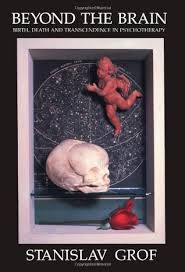 Reviewed by Winafred Lucas
Reviewed by Winafred Lucas
In JRT Issue 2, Fall 1986
From the vantage point of a past-life therapist, Grof’s impactful book needs to be evaluated on three parameters. The first of these addresses his breathtaking perception and integration of the multi-dimensional aspects of our changing paradigm. For those of us who have suffered lack of credibility because we felt forced to fit our thinking and therapeutic modalities into the Newtonian-Cartesian paradigm which could not contain them, it is a relief to understand that it is no longer necessary to apologize because we have moved into a different way of conceptualizing the universe. Grof, drawing heavily on new trends in physics and biology, demonstrates in what way we are leaving this Newtonian-Cartesian model, which has no room for transpersonal material, and moving into the quantum-relativity model in which transpersonal happenings and spiritual seeking are at home.
Synthesizing the contributions of such innovative thinkers as David Bohm, Prigogene, Karl Pribram, and Rupert Sheldrake, Grof demonstrates that we are steadily moving into a paradigm where the world is seen in terms of energy patterns instead of solid matter, a conception which opens up unlimited possibilities for transpersonal conceptualization. This shift from substance and object to form, pattern, and process gives credibility to experiential insights from unusual states of consciousness. These, in turn, suggest the existence of intangible and unfathomable creative intelligence, aware of itself and permeating all realms of reality. Extending Bohm’s concept of the implicate order, from which our space-time world is unfolded, Grof suggests a creative matrix for our transpersonal experiences.
The second area in which Grof has demonstrated an impressive capacity for analysis and synthesis is that of psychotherapy and psychiatry, both in their assumptions and their modalities. He traces the impact and the limitations of the Newtonian-Cartesian paradigm, searching out the lines of development psychotherapy and psychiatry have taken, carefully honoring their gains but showing the dead-end at which they have arrived because of the severe limitations of the world-view under which they were conceptualized. Not only are these areas limited by the “solid” conception of matter and the linear conception of time, which leave no room or explanation for transpersonal phenomena, but their basic postulate of cause and effect itself runs into a barrier because of the focus on verbalizations beginning in early childhood. The omission of the birth process and of body experiences in general leaves a truncated and incomplete picture of the personality. This section summarizes succinctly and brilliantly the trends and limitations demonstrated in the history of psychotherapy and assists the reader in evaluating different modalities so that positive approaches can be appreciated and unproductive ones shunted off.
For a past-life therapist, the disconcerting part of the book and the third major area of evaluation is its emphasis on the physical birth process as the origin of basic patterns of emotional perception and response, which Grof calls the COEX systems (systems of condensed experience). All major patterns, including anger, guilt, phobias and obsessions, and the spectrum of sexuality and aggression, are considered to originate in one of the four matrices of birth. Though Grof in a subtle way honors past-life experience, he does not make room for it in his understanding of the etiology of the COEX systems. The one exception is guilt, which he has difficulty integrating into any of the birth matrices. He is finally led to conclude that “the traumatic aspects of birth can be identified as the working of condensed bad karma.” The suffering involved is then seen not as absurd or capricious, but as reflecting the individual’s karmic responsibility for action in previous incarnations.
This is the only time Grof clearly goes behind the birth process: he fits every other psychopathological manifestation smoothly into one of the birth matrices. However, his willingness to take the etiology of patterns back to the actual birth, with stress on its physical concomitants, broke a long stalemate in psychotherapeutic conceptualization and opened the way to take the basic patterns or COEX systems back into other lifetimes. The birth experiences then emerge as one more manifestation congruent with established COEX systems. It is satisfying to fit everything into a tight conceptual model, but such a model seldom holds indefinitely, and it is important for those conceptualizing in the area of past lives to remember not to set limits but to allow the possibility of etiology behind what we can now conceive.
So astute and perceptive is Grof’s thinking that Beyond the Brain is recommended for psychotherapists of all persuasions. The past-life therapist will find in it clear theoretical grounding for his work as well as some innovative ways of deepening it.
ISBN-13: 978-0873958998
